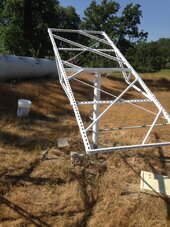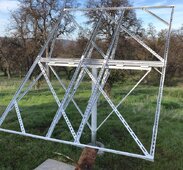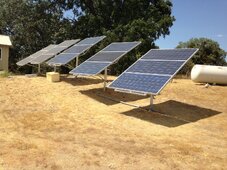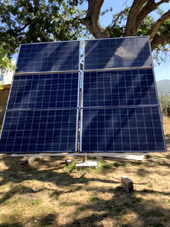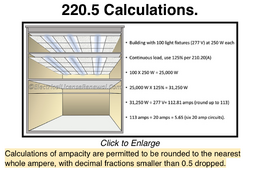Solar User
New Member
Hello to everyone. I have some questions about a solar setup that I am going to be using. I have 3 rigid panels that are all different and I am planning to use them all to charge my solar power station (batteries) through a Victron solar charge controller (150/45 TR). I have a Bouge RV 300 watt 10bb panel (https://www.bougerv.com/products/300w-12v-10bb-mono-solar-panel), an HQST 100 watt 10bb panel (https://hqsolarpower.com/new-releas...-ip68-waterproof-monocrystalline-solar-panel/), and a Bouge RV 100 watt 9bb panel (https://www.bougerv.com/products/100w-9bb-cells-mono-solar-panel). My idea was to only have to run one line from the panels to the station. Therefore, my plan is to wire the two 100 watt panels in series and that would add voltage but would limit the current to that of the panel with the lowest current rating. I was thinking that I would then wire the combination of the two 100 watt series panels with the 300 watt panel in series (which should add the voltages but should still be below the voltage rating of the solar charge controller. My concern is that the whole array would then be limited to the current of the single panel with the lowest current rating (wasting a lot of potential solar - especially from the 300 watt panel).
I have a Bouge RV splitter to run panels in parallel so I also considered splitting the 300 watt panel off from the two series connected 100 watt panels and running them in parallel but my understanding is that I would then need to fuse the panels in case of short circuit since the current rating is so much higher for the 300 watt panel.
Is my understanding of all of this correct? If so, would it be worth it to fuse the panels and run the parallel configuration described above? What fuse sizes would I need for inline MC4 fuses? Would the inline fuse only need to be placed on the positive lead for the two series combined 100 watt panels and would the fuse need to be rated at the lower of the max series fuse rating values for the two 100 watt panels?
I am just wanting to see how I can most safely maximize the power production from these panels on a single line to the solar charge controller so thanks to those who might be able to confirm my understanding or can offer other suggestions.
I have a Bouge RV splitter to run panels in parallel so I also considered splitting the 300 watt panel off from the two series connected 100 watt panels and running them in parallel but my understanding is that I would then need to fuse the panels in case of short circuit since the current rating is so much higher for the 300 watt panel.
Is my understanding of all of this correct? If so, would it be worth it to fuse the panels and run the parallel configuration described above? What fuse sizes would I need for inline MC4 fuses? Would the inline fuse only need to be placed on the positive lead for the two series combined 100 watt panels and would the fuse need to be rated at the lower of the max series fuse rating values for the two 100 watt panels?
I am just wanting to see how I can most safely maximize the power production from these panels on a single line to the solar charge controller so thanks to those who might be able to confirm my understanding or can offer other suggestions.



